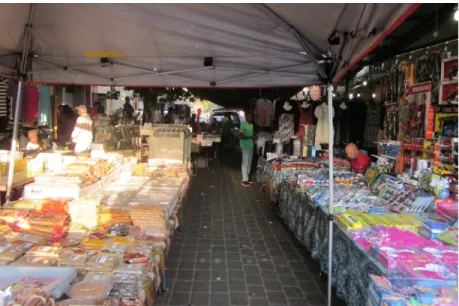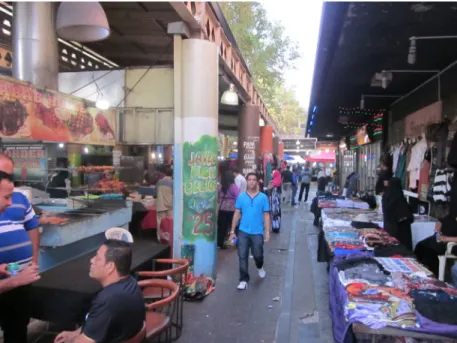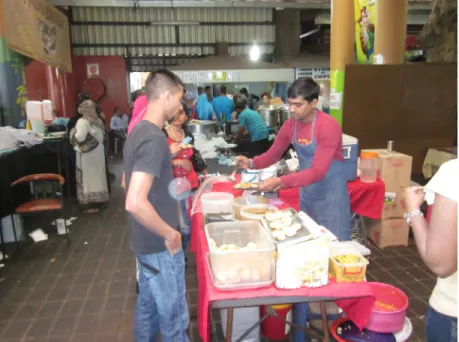By examining the cultural performances of migrants in Fordsburg, I will demonstrate the ways in which cultural customs change in the process of migration. Therefore, the application of the term "smartphone" in the context of young Indian migrants specifies the era of migrant experience that I am talking about. His study analyzed the performance of migrants in the host society and the change in their habits over the years.
In the next section, I will introduce culture as part of the process of changing migrant lifestyles, especially the food and clothing habits of new migrants. Based on this assertion, I will build my arguments to capture the ongoing changes in the lives of migrants in South Africa. This section will examine the opportunities created by migration in the Global South.
The Fordsburg Migrants provide an overview of the active migration processes taking place in the Global South. It is quite different with the attribution of the "lifestyle" mentioned by the above-mentioned scholars in the north. As Rigg noted, the pressure to become modern "has crept into every crack, nook and cranny of the world" in the global South.
Similar patterns can be seen in the context of Indian migrant workers who tend to migrate in search of a (new) 'modern' life.

CHANGING CLOTHING STYLES
Nowadays, according to Oonk, the wearing of traditional dress and the practice of certain dressing habits among the established migrants in East Africa is not visible in the new generation. Today it does not necessarily carry the same values as in the past. Clothing habits also matter but have no relevance in today's era because clothing habits have changed to western styles of shirts, pants and jeans.
Migrants are cultural and symbolic bearers of the village/religious identity represented in the closed community imaginaries of Fordsburg. Shoaib's appearance is somewhat similar to Ghoolam's appearance, but there is a distinction in the personalities of both Indian Muslim migrants, which will be discussed shortly. What are you doing?” for “What are you doing?” He emphasizes his accent on certain words to sound like a South African.
These two stories of Ghoolam and Shoaib are visible in almost every young Muslim migrant at the Fordsburg Flea Market. In the following examples, I argue that maintaining dress habits is not only about religion or tradition, but also about background, profession and culture. Changing oneself to be more local can easily be done by clothing habits, and I will try to prove that in the following examples.
During the week he works for a petrol company SASOL and on weekends he trades at the flea market. Similarly, Indian migrants in the Fordsburg trading area wear certain clothes that express the richness of the social identities they carry. He has a position of power that often becomes visible during the discussions among his colleagues at the flea market.
The above illustrations of changing habits were observed among the new migrants of different classes and religions. A study of pictorial archives shows a remarkable change in the dress habits of Indian immigrants to South Africa. The pictures presented in the book help one understand that clothing determined one's position and status in society.
Similarly, in the present era, the exposure to foreign cultures and the struggle between the youth classes to maintain their traditional ties is best reflected in their dress habits. Hindus have no special requirements to maintain their appearance, but Muslims must be in the traditional space and don't want to be too westernized.
FOOD HABITS
Due to the predominant Islamic presence, pork and other non-religious practices such as alcohol consumption are discouraged. This is because Fordsburg is an Indian area where you can find all the dishes of Indian cuisine at an affordable price. The fact that there is only one pub near the shopping area in Fordsburg is taken very seriously.
It's mostly takeout that caters to poor migrant workers working in Fordsburg who tend to eat the food because it's fairly cheap compared to others. The employees who work in the restaurants usually have their food in the restaurant itself, and those who work elsewhere bring their food from home or eat in the nearby restaurant. Usually workers don't go to restaurants; they prefer to eat their lunch in the shop.
This is because most of them come from a caste that is considered lower in the Indian caste system; so they avoid discussing caste, which makes them feel inferior. It is not permissible." But when it came to drinking habits, they discussed it freely. I suspect that some of them who have arrived in the last ten years also eat beef.
This is due to the network of local African friends and the easier availability of beef in South Africa than in India. There is another possibility, which cannot be denied, that Hindu migrants do not eat beef at all: perhaps it is the result of the reproduction of a religious identity in a predominantly Muslim neighborhood. It is unclear due to the fact that the Hindu religion is made up of different castes and it is the caste that disciplines the dietary habits.
Some may say, as is said in India, "We are vegetarians except on Sundays." This means that, people want to emphasize their vegetarianism, leaning towards Hinduism which prohibits eating meat, but still consume meat due to caste approval. Since the transactions that are carried out in the space of cognitions have certain limitations, which, according to Faist, limit the freedom of the individual involved in significant ways. This can be elaborated with the example where some new immigrants want to try foods of African or other cultures, but are unable to do so because of the constant surveillance and surveillance of the Fordsburg area, which prevents them to practice some habits. Migrants' life stories and personal experiences provide useful insights into the contemporary situation of changing migrant work habits in the new workplace.

CONCLUSION
NOTES
Feeling South African Indianness: Citizenship, Identity and Experiences of Exclusion in Oriental Plaza, Johannesburg, South Africa.

